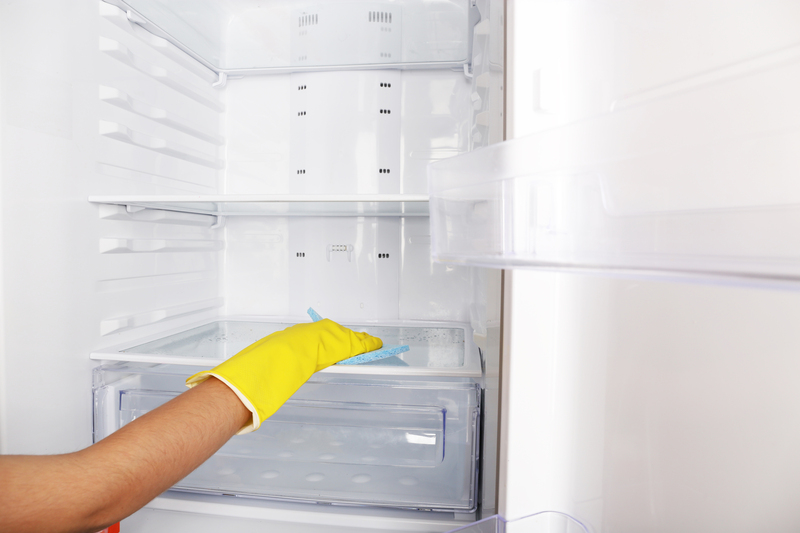Easy Method to Clean Mouldy Window Sills
Posted on 02/07/2025
Easy Method to Clean Mouldy Window Sills: A Complete Guide
Dealing with mouldy window sills is a common issue for many homeowners and renters, especially in damp or humid climates. If left unchecked, mould can not only ruin the aesthetics of your windows but also pose health risks. Fortunately, cleaning mouldy window frames is simple with the right techniques. This comprehensive article covers the easy method to clean mouldy window sills, offering expert tips and step-by-step instructions to help you restore your windows to pristine condition.

Understanding Why Mould Grows on Window Sills
Mould thrives in moist, poorly ventilated spaces, making window sills--especially wooden or painted ones--particularly susceptible. Mould spores can settle on these surfaces and multiply rapidly if the area stays damp.
- Condensation: Windows naturally collect condensation, especially during colder months.
- Lack of Airflow: Poor ventilation can trap moisture around the frame.
- Organic Material: Dust, pollen, and wood or paint provide nutrients for mould.
Understanding these causes helps homeowners prevent mouldy window sills in the future.
Why You Must Clean Mouldy Window Sills Immediately
Mould is more than just unsightly. Exposure to mould spores can trigger allergies, exacerbate asthma, and lead to respiratory issues, especially in sensitive individuals. Additionally, prolonged mould growth can damage window sills--causing paint to peel, wood to rot, and frames to deteriorate. Cleaning up mouldy window sills as soon as possible keeps your home healthy and safe.
Common Signs of Mouldy Window Sills
- Discoloration (black, green, or white patches)
- Musty or earthy smell around windows
- Peeling paint or warping wood
- Increased condensation inside windows
If you notice any of these problems, it's time to learn the easy way to clean mould off window sills.
Preparations: Safety First!
When cleaning mould, always prioritize safety to protect yourself from inhaling spores or irritating your skin and eyes. Here's what you'll need:
- Rubber gloves
- Protective eyewear (goggles)
- Face mask (N95 or similar recommended)
- Microfiber cloths or sponges
- Bucket of warm water
- Mild detergent or white vinegar (more on cleaning solutions below)
- Old toothbrush or small scrub brush
- Spray bottle
- Paper towels or disposable rags
Open windows or provide ventilation during cleaning. If the area of mould covers more than a square meter, consult a professional mould remover.
Easy Method to Clean Mould Off Window Sills: Step-By-Step Instructions
1. Choose Your Cleaning Solution
There are several effective cleaning solutions for mould on window sills. The choice depends on the severity of the mould and your preference for natural or chemical cleaners.
- White Vinegar: Natural, non-toxic, and highly effective against most mould species.
- Baking Soda Paste: Combines gentle abrasiveness with mould-killing power.
- Mild Detergent: Simple soap and water can remove lighter mould colonies.
- Hydrogen Peroxide (3%): Powerful oxidizer for stubborn mould stains, but test on an inconspicuous spot first.
- Commercial Mould Removers: Follow manufacturer instructions and always ensure good ventilation.
_Avoid mixing bleach with other chemicals_ unless stated, as this can release harmful fumes.
2. Remove Surface Dust and Loose Mould
- Use a dry disposable cloth or paper towels to remove any dust and loose mould from the window sill.
- Do not sweep or brush dry spores directly without dampening first, as this can release them into the air.
3. Apply the Cleaning Solution
- Spray undiluted white vinegar directly onto the mouldy areas. For tiled or painted sills, you can also use diluted hydrogen peroxide (50:50 with water). For wood, stick to vinegar or a mild soap solution.
- Let it sit for at least 10-15 minutes. This breaks down the mould and ensures deeper penetration.
4. Scrub the Mouldy Area
- Using a toothbrush or soft brush, gently scrub the sill, paying special attention to cracks and corners.
- For stubborn build-up, make a paste of baking soda and water, apply it, and scrub in circular motions.
- As you work, regularly wipe away loosened mould with a wet cloth.
5. Rinse and Dry Thoroughly
- Once the area appears clean, wipe it down with a fresh cloth dampened with clean water to remove any residue.
- Immediately dry the area thoroughly with a separate dry cloth. Moisture left behind can encourage new mould growth.
6. Dispose of Contaminated Materials Safely
- Throw away used paper towels, rags, and disposable gloves in a sealed garbage bag.
- Wash reusable items in hot water with detergent.
Alternative: The Baking Soda Method
If you prefer a chemical-free approach, baking soda is a safe and gentle option. It not only removes visible mould but also deodorizes the surface:
- Mix 1/2 tablespoon of baking soda in a spray bottle filled with water.
- Spray the affected area and let it sit for 10 minutes.
- Scrub gently and wipe away mould, repeating as needed.
- Finish by spraying and wiping with clean water, then dry thoroughly.
How to Clean Mould From Wooden Window Sills
Wooden window sills are especially vulnerable to water damage and rot, so they require extra care:
- Avoid soaking the wood: Too much water can worsen the problem. Use a damp, not wet, cloth.
- Use vinegar, not bleach: Bleach can damage wood fibres and is less effective on porous surfaces.
- Dry immediately: Use a fan or hair dryer on a low setting after cleaning.
- Assess the damage: If wood is soft, crumbling, or discoloured, consider refinishing or replacing the sill after mould removal.
How to Prevent Mould From Returning on Window Sills
Once you've tackled mouldy window frames, keeping them clean and dry is key to long-term prevention. Here's how:
- Keep windows open regularly to promote air circulation.
- Wipe condensation away each morning in winter or rainy weather.
- Use dehumidifiers in rooms prone to dampness.
- Check for leaks around windows and seal gaps with caulk.
- Repaint sills with mould-resistant paints where possible.
- Dust and clean sills frequently to remove organic matter.
Natural Remedies to Keep Window Sills Mould-Free
To keep your results long-lasting, try these natural anti-mould treatments:
- Spritz sills bi-weekly with a mix of vinegar and water.
- Apply a dilute tea tree oil solution (1 tsp oil to 1 cup water) as a natural mould deterrent.
- Ensure indoor plants are not causing excess moisture near windows.
Frequently Asked Questions About Window Sill Mould Removal
Can I use bleach to clean mouldy window sills?
Bleach is not recommended for wood and may discolor or damage paint. White vinegar or hydrogen peroxide are safer alternatives for most surfaces. Save bleach for tiled window areas only and use it with adequate ventilation.
How often should I check and clean my window sills?
Ideally, inspect your sills every month, especially in winter or during rainy seasons. Clean at the first sign of mould to prevent larger infestations.
Should I replace heavily mouldy window frames?
If window frames are soft, warped, or rotten, cleaning may not be sufficient. Consider consulting a contractor to assess structural integrity.
Is there a quick method for light mould growth?
For minor or beginning mould, spraying with a vinegar solution and wiping dry is often enough. However, always check hidden corners for deeper issues.

When to Call a Professional Mould Remover
If mould covers a large area (greater than 1 square meter), has penetrated deep into the walls, or you are sensitive to mould, it's best to seek professional help. Licensed mould removal specialists use advanced equipment and treatments to safely eradicate stubborn infestations.
Conclusion: Say Goodbye to Mouldy Window Sills!
Tackling window sill mould doesn't have to be daunting. With a few household ingredients and this easy method to clean mouldy window sills, you can restore your window frames to a safe and healthy state. Regular maintenance and quick action at the first sign of mould will keep your windows--and your family--protected for years to come.
Be proactive, clean often, and enjoy a fresher, brighter home!




